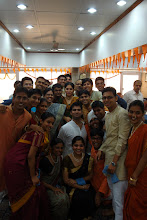CHAPTER 21 (A): GIVE US THIS DAY OUR DAILY BREAD………………
Bread!!! A word of many meanings, a symbol of giving….a symbol of sharing….one food that is common to so many countries…..eaten by millions across the world……….but what really is bread?
The Hungarians have a saying….’bread is older than man’ !!!!
More than 12,000 years ago, primitive people made flat breads by mixing coarsely ground grain
and water and then placing these ‘cakes’ in the sun to bake. Later on, bread was cooked on
heated rocks or in the ashes of a burnt out fire
It was the Egyptians who were credited with using a starter of wild yeast from the air that was kept and mixed with fresh dough and then cooked to create a leavened product. Legend has it that a slave in a royal Egyptian household forgot about some dough that he had set aside. When he returned, it had doubled in size. Trying to hide his mistake, the dough was punched down furiously and baked. The result was a bread, lighter than anyone had tasted. I cannot vouch for the veracity of this anecdote, but it does sound plausible.
The ancient Greeks had over 50 types of bread. Public bakeries and ovens were built by the government for everyone’s use and were popular places to visit the neighbors. The Romans continued with the idea of public bakeries. Even today, villages in the
Bread has also found its way into the English language. In American English, the word’s bread and dough are slang for money. A bread winner is one who earns the wage to keep the family going and a bread basket often refers to a geographical region that has the principal grain supply. Have you ever thought about the expression ‘the greatest thing since sliced bread’ !!?? In Arabic, the words for bread and life are similar. The Russian word for Hospitality translates into bread and salt. In
In several countries, bread is closely associated with religion. In the bible alone, there are over 250 references to bread.
There are some interesting stories associated with bread. The Italian Calzone literally means ‘pants legs’ and got its name probably because of its resemblance to the billowy trouser legs favored by Neapolitan men in the 18th and 19th century. Anadama bread from the
Rum Babas were said to have gotten their name when the Polish king Stanislas Leszcynski was exiled to
At least three explanations exist for the origin of pannetone, an egg and butter rich cylindrical loaf that dates back to the 15th century. Pannet was thought to be a bread eaten daily, so this special bread was called pannetone. Also pan di tono, a rich and fancy bread was made , even by the poor at Christmas time. The third story centers around Tony, a baker, who was given all the ingredients he needed for the ultimate loaf of bread by a nobleman in exchange for the bakers daughter. The bread was therefore called pan-di-tonio or Ton’s bread.
Stories of wars being won or lost and favors being granted by the barter of freshly baked bread are common. At one time, French soldiers demanded white bread to give them courage. Greek women are said to have tucked a piece of bread into their husbands/sons tunic when they set off to war.
Bakers in local communities celebrated political victories or ‘saved a country by introducing a specific shape or type of bread. The crescent shaped croissant originated in
Necessity was also the mother of invention. Pumpernickle, a German baker was said to have developed a hearty loaf out of rye and with very little wheat flour during a famine sometime around 1450.
In conclusion, I would like to say that be it a baguette or a brioche, a pannetone or a pav…bread is the staff of life…a bond of friendship and it will always be a symbol of that around the world, wherever it comes from. To break it is to share……… to make it is to care !!!!!
Ihm Mumbai
2006-07

No comments:
Post a Comment